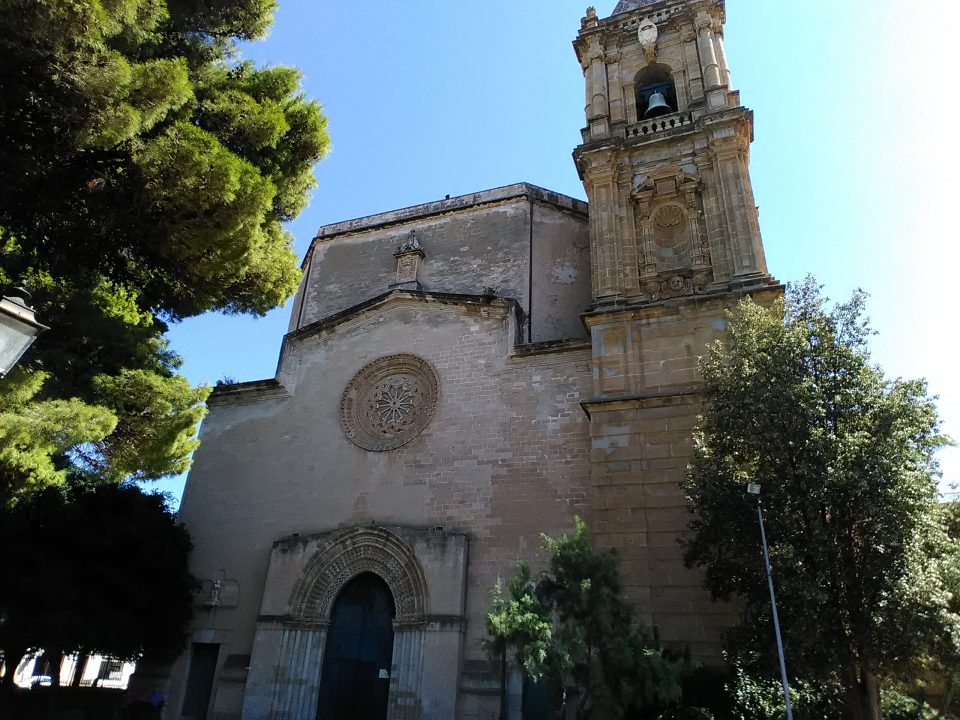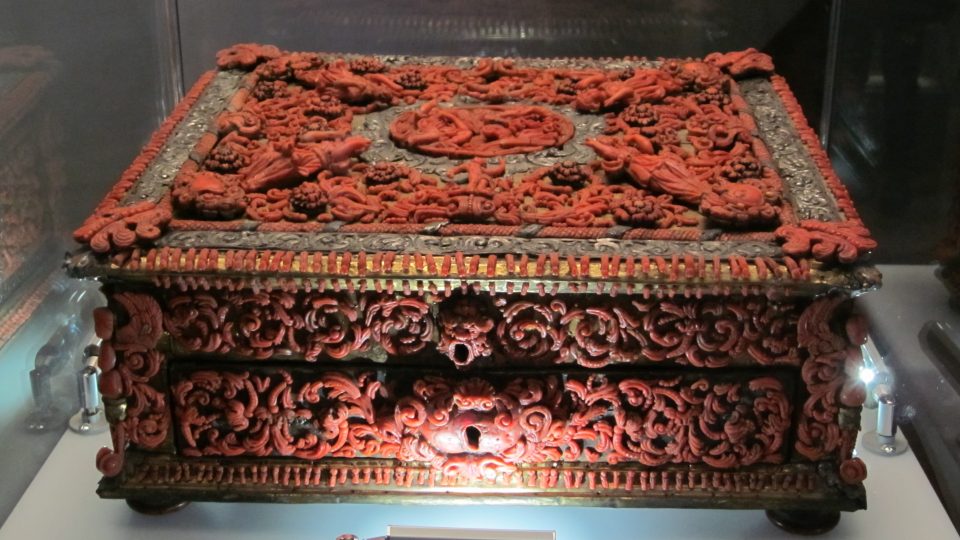A few kilometers from the centre of Trapani town there is a sanctuary to Our Lady of the Annunciation and next to it an interesting museum, named after Count Agostino Pepoli.
The shrine of Our Lady of the Annunciation
The shrine of Our Lady of the Annunciation lies where once there was a village and a small 13th-century church. A noble family donated this church, along with the surrounding space, to the Carmelite Fathers after they arrived in Trapani, between 1224 and 1240.
Thanks to the friars the church became a three-nave basilica of Chiaramonte Gothic style with an attached convent, completed in 1332.
But in the 18th century the popular architect Giovanni Biagio Amico transformed the church into a single nave.
The façade and the rose window
Now the façade has a 14th century Gothic doorway with widened arches, multiple archivolts decorated with zigzags and small flowers.
Above the portal is a rose window of the same Chiaramonte Gothic style. Today it only preserves a small portion of the original, because of its several renovations.
Next the façade there is a Baroque bell tower, built in the second half of the 17th century by Simone Pisano.
Today’s interior is the work of architect Giovanni Biagio Amico (1741). In 1760 Luciano Gambina finished the works.
The Virgin’s Chapel
Two 16th century portals lead into the Virgin’s Chapel. A marble arch by Antonello and Giacomo Gagini (1537) enriched by the figures of the prophets, delimits the space of the single nave from the presbytery. Here is the beautiful 14th-century marble statue of the Virgin and Child, attributed to Nino Pisano.
People from Trapani love Our Lady of Trapani very much, still today.
The fine workmanship and sweet gazes of both the Madonna and Child make the statue the most significant example of Gothic sculpture in Sicily.
At the foot of the Virgin lies a silver-coated relief map of sickle-shaped Trapani from the late 17th century.
In the adjoining room, decorated with variegated inlaid marble, is the chapel of St. Albert, the city’s patron, whose silver-coated statue dates back to the second half of the 18th century.
Legends about the statue
There are several stories about the origin of the statue of Our Lady of Trapani. According to one legend, the origin of the image dates back to the year 733. And it was the work of a sculptor on the island of Cyprus.
Then, at the time of Crusades, a group of crusaders, knights and nobles on Cyprus decided to join the Order of Templars and sailed to Jerusalem. They brought the statue of the Virgin and Child with them.
The image seems to have remained in Jerusalem for almost 150 years. After the failure of the 7th Crusade, one of the Knights Templar sailed to Italy bringing the image with him, possibly to save it from profanation by the Turks.
During the course of the voyage, the ship ran into a terrific storm. Soon it was clear that the ship and all the sailors were doomed. But the knight did not despair. He prayed fervently to the Blessed Mother and promised her, if they weathered the storm, he would build a shrine to her on the first land they would touch.
The storm died down and eventually the ship landed at Trapani. The story of the miraculous image of Our Lady of Trapani quickly spread among the people of Trapani and they decided to build a church in Mary’s honor.
Anyway a new statue was sculptured, for the present statue is a work of the 13th century art schools, possibly of the Pisan School.
The Regional Pepoli Museum
Adjacent to the church, where once there was the convent of the Carmelites, is the Pepoli Regional Museum, with its rich collection of ancient paintings, especially of jewels and vestments in coral, true masterpieces of local crafts.
The main entrance to the church and to the Museum are both inside a nice garden.
The museum is named after its founder, Count Agostino Pepoli, who established it as a civic museum between 1906 and 1908.
pepoli Museum’s collections
The rich heritage of the museum originates mainly from three important collections.
First, the collections of Count Pepoli including paintings, jewels, works of applied art, historical relics and archaeological finds mainly from Erice.
Second, Giovan Battista Fardella collection mainly made by Neapolitan paintings. The General purchased them on the Neapolitan antiques market while he was Minister of the Bourbon king.
Third, the collection of Count Francesco Hernandez, which includes paintings, marble sculptures, cribs, ceramics, archaeological finds.
The museum’s collections have currently three main sections. They are Renaissance Sculpture, Paintings and Applied Arts, plus the small section dedicated to the Memories of the Risorgimento.
Coral craftworks
The best part of the Pepoli Museum is the one of coral craft.
Between the 15th and 16th century fishermen began to fish coral. So Trapani developed a flourishing craft of objects made by coral. At first they were objects of worship, such as crucifixes and rosaries.
Indeed, in the historical centre there are roads with the name of coral carvers, goldsmiths and silversmiths. In those roads they had their artisan workshops.
Even today, in a very smaller quantity, coral art and the carving of precious materials still survive in the town.
Coral craftmen acquired fame throughout the Mediterranean with their artistic products. The most beautiful works are those in which the craftmen applied coral to metals, namely copper and bronze, often gilded.
The masters from Trapani created religious and secular works of art, bought by kings, princes and popes. That is why many of them are currently in national and international museums such as in London Dublin Barcellona and Madrid.
The Pepoli museum preserves hundreds of pieces such as holy water stoups, crucifixes, sacred and profane jewels, chalices and so on. The Christmas Cribs, by local handicraft as well, are real masterpieces made by coral, copper, ivory and sea materials.

